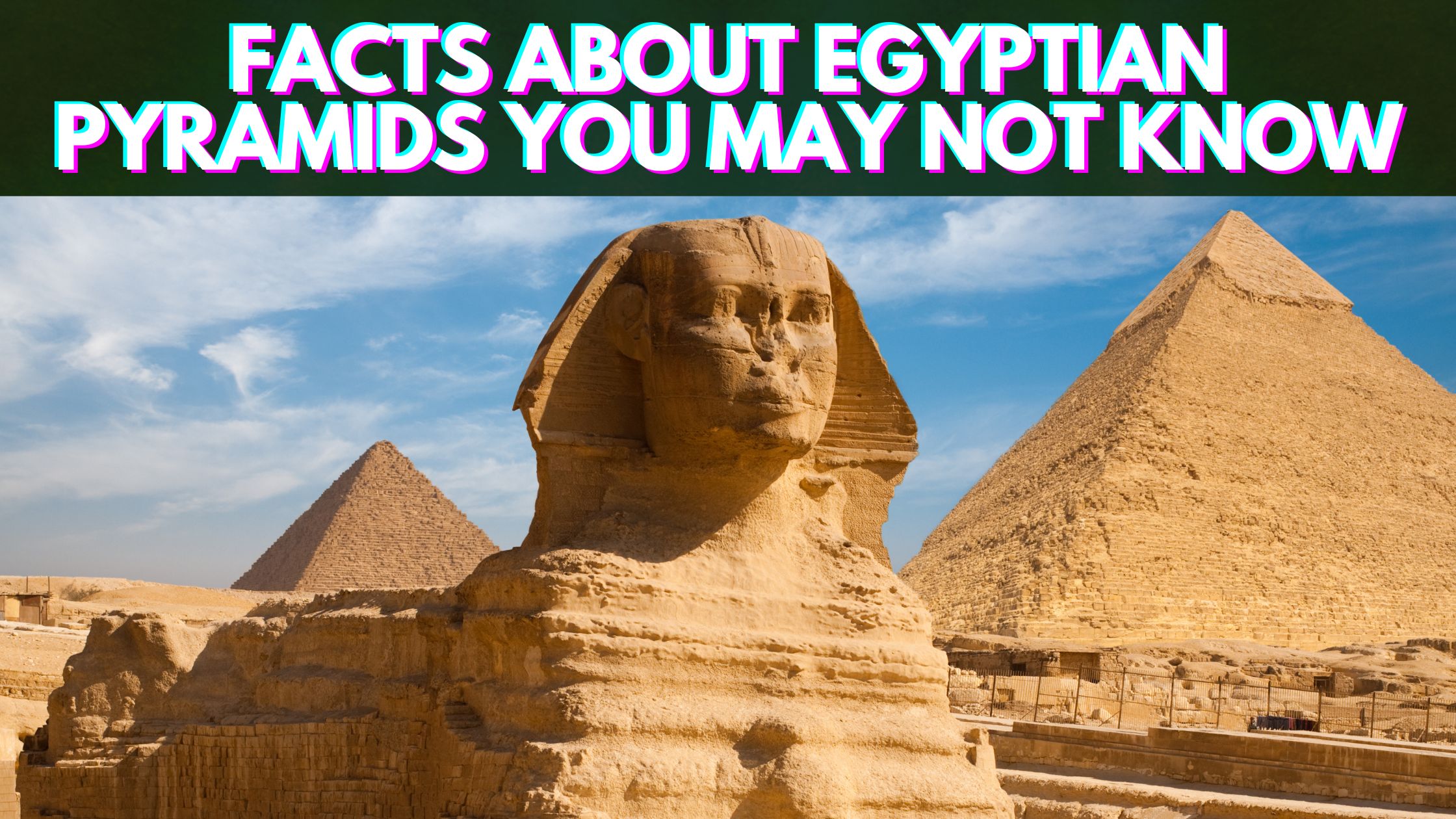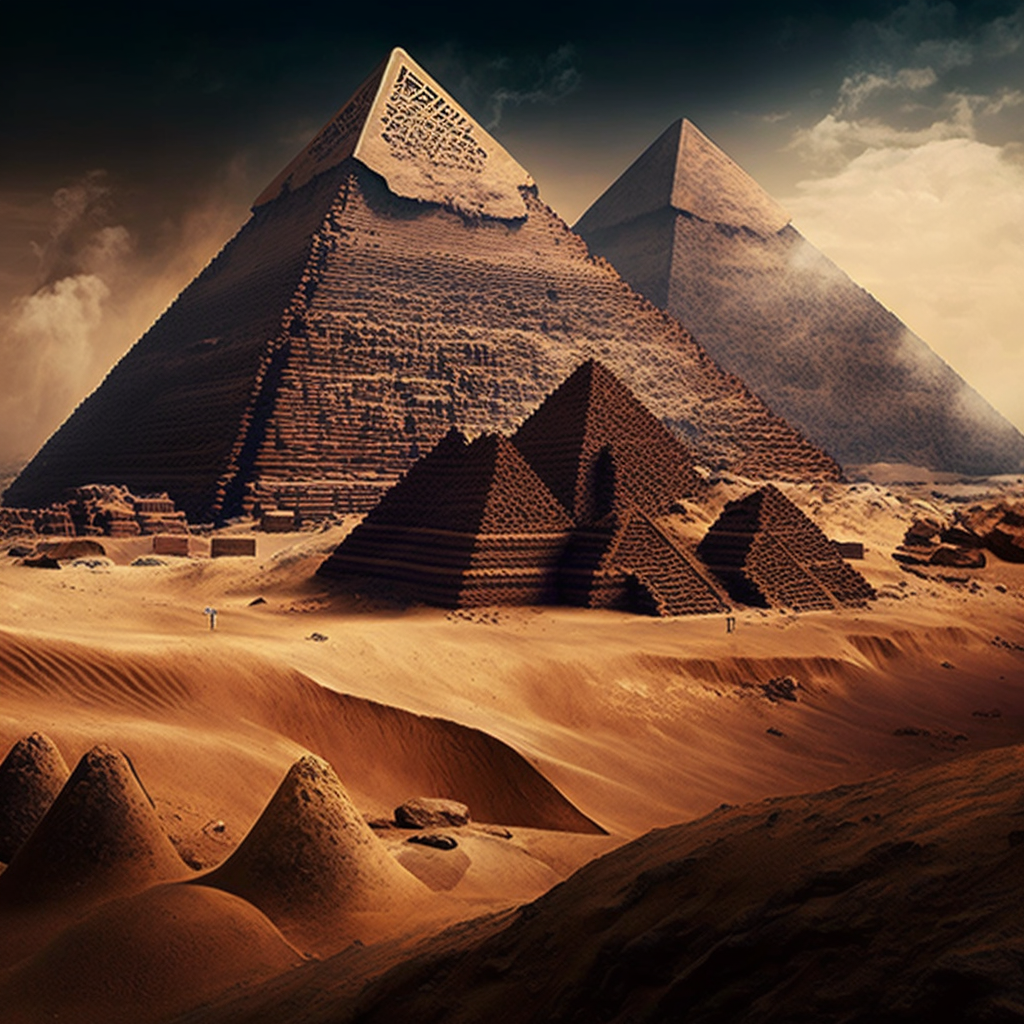Pyramids are more than just ancient structures; they're time capsules that whisper secrets of civilizations long gone. Imagine standing at the base of the Great Pyramid of Giza, staring up at a marvel that's been standing tall for thousands of years. That's the kind of awe-inspiring experience we're diving into today. So, grab your explorer hat and let's uncover the mysteries of these ancient wonders.
When you think about pyramids, your mind probably jumps straight to Egypt. But guess what? These triangular titans aren't exclusive to the land of the pharaohs. From Mexico to Sudan, pyramids pop up all over the globe, each with its own story to tell. And that's what makes them so fascinating. They're not just random piles of stone; they're symbols of human ingenuity and ambition.
Now, you might be wondering why pyramids have captured our imagination for so long. Well, it's not just about their size or shape. It's about the questions they raise. How did ancient people build these massive structures without modern technology? What was their purpose? And why do they keep popping up in different parts of the world? Stick around, and we'll tackle these questions and more.
Read also:Xhmaster The Ultimate Guide To Understanding And Mastering The Tool
Table of Contents
- The History of Pyramids
- How Were Pyramids Built?
- What Were Pyramids Used For?
- Famous Pyramids Around the World
- Egyptian Pyramids: The Ultimate Masterpieces
- Mexican Pyramids: Hidden Gems of the Americas
- Modern-Day Pyramids: A Tribute to the Past
- Unsolved Mysteries Surrounding Pyramids
- Pyramids and Tourism: A Booming Industry
- The Future of Pyramids: Preservation and Beyond
The History of Pyramids
Let's rewind the clock a few thousand years and take a look at how pyramids came to be. The earliest pyramids weren't the towering giants we know today. They started out as simple mounds of earth and evolved into the architectural wonders we admire now. The first pyramid in Egypt, the Step Pyramid of Djoser, was built around 2630 BCE. This pyramid was a game-changer, setting the stage for the iconic structures that followed.
But pyramids weren't exclusive to Egypt. In the Americas, ancient civilizations like the Mayans and Aztecs were busy building their own versions of these massive structures. While they may not have looked exactly like the Egyptian pyramids, they served similar purposes and showcased the same level of architectural brilliance.
Evolution of Pyramid Design
Over time, pyramid design became more sophisticated. The Egyptians, for example, transitioned from step pyramids to smooth-sided pyramids. This change wasn't just about aesthetics; it was about achieving perfection. The Great Pyramid of Giza, built during the reign of Pharaoh Khufu, is a testament to this evolution. It's the largest and most famous pyramid in the world, standing at an impressive 146 meters tall when it was first built.
How Were Pyramids Built?
One of the biggest mysteries surrounding pyramids is how they were constructed. Without cranes or bulldozers, how did ancient people move massive stone blocks and stack them so precisely? Historians and archaeologists have been scratching their heads over this for years. There are several theories, but no definitive answers.
- Ramp Theory: One popular theory suggests that workers used long ramps to haul the stones up the sides of the pyramids. These ramps would have been made of mudbrick and would have allowed workers to gradually increase the height of the structure.
- Internal Spiral Ramp: Another theory proposes that the ramps were built inside the pyramid itself, spiraling upwards as the structure grew taller. This would have saved space and resources.
- Water Levitation: A more recent theory suggests that water was used to lift the stones into place. By submerging the stones in water, their weight would have been reduced, making them easier to move.
Regardless of the method used, it's clear that building a pyramid required a massive amount of manpower and resources. Some estimates suggest that it took tens of thousands of workers over two decades to complete the Great Pyramid of Giza. Now that's dedication!
What Were Pyramids Used For?
Pyramids weren't just built for show. They had specific purposes, depending on the culture that constructed them. In Egypt, pyramids were primarily used as tombs for pharaohs. The ancient Egyptians believed in an afterlife, and the pyramids were designed to help the pharaohs transition into this next phase of existence. Inside the pyramids, you'd find chambers filled with treasures, food, and other items the pharaoh might need in the afterlife.
Read also:Securely Connect Raspberry Pi The Ultimate Guide For Tech Enthusiasts
In contrast, the pyramids of the Americas often served as religious temples. The Mayans and Aztecs would climb to the top of their pyramids to perform rituals and offer sacrifices to their gods. These structures were seen as a connection between the earthly realm and the divine.
Cultural Significance
Beyond their practical uses, pyramids held immense cultural significance. They were symbols of power, wealth, and spiritual enlightenment. For the Egyptians, building a pyramid was a way to honor the gods and ensure the pharaoh's place in the afterlife. For the Mayans and Aztecs, pyramids were a way to communicate with the gods and ensure the prosperity of their civilizations.
Famous Pyramids Around the World
While the Great Pyramid of Giza gets most of the attention, there are plenty of other pyramids worth exploring. Let's take a quick tour of some of the most famous pyramids around the world.
- Pyramid of Khafre: Located next to the Great Pyramid of Giza, this pyramid is slightly smaller but just as impressive. It's also home to the Sphinx, one of the most iconic statues in the world.
- Pyramid of the Sun: Found in Teotihuacan, Mexico, this pyramid is one of the largest in the Americas. It's believed to have been built around 100 CE and was used for religious ceremonies.
- La Danta Pyramid: Located in Guatemala, this pyramid is part of the El Mirador complex. It's one of the largest pyramids in the world by volume, but it's often overlooked because it's covered in jungle foliage.
Egyptian Pyramids: The Ultimate Masterpieces
When it comes to pyramids, Egypt is the undisputed champion. The pyramids of Giza, in particular, are some of the most famous structures in the world. But what makes these pyramids so special? For starters, they're incredibly well-preserved, considering they're over 4,000 years old. The precision with which they were built is mind-blowing, especially when you consider the tools available at the time.
But the Egyptian pyramids aren't just about their size and shape. They're also about the stories they tell. Inside the pyramids, archaeologists have discovered incredible artifacts that shed light on ancient Egyptian culture. From golden masks to hieroglyph-covered walls, these pyramids are like time capsules waiting to be opened.
The Great Pyramid of Giza
The Great Pyramid of Giza is the star of the show. It's the largest pyramid in the world and one of the Seven Wonders of the Ancient World. Built during the reign of Pharaoh Khufu, this pyramid was originally covered in polished limestone, giving it a shining appearance. Inside, there are three main chambers: the King's Chamber, the Queen's Chamber, and the Subterranean Chamber. Each chamber has its own story to tell, making the Great Pyramid a treasure trove of ancient history.
Mexican Pyramids: Hidden Gems of the Americas
While the Egyptian pyramids get all the glory, the pyramids of Mexico are just as fascinating. These structures were built by ancient civilizations like the Mayans and Aztecs and served as religious and ceremonial centers. Unlike the smooth-sided pyramids of Egypt, Mexican pyramids often have stepped sides and flat tops, where temples were built.
One of the most famous Mexican pyramids is the Pyramid of the Sun in Teotihuacan. This pyramid is massive, standing at 75 meters tall and covering an area of over 100,000 square meters. It's believed to have been used for religious ceremonies and sacrifices. Another notable pyramid is El Castillo in Chichen Itza. This pyramid is unique because it was designed to align with the sun during the spring and autumn equinoxes, creating a shadow that looks like a serpent slithering down the steps.
Modern-Day Pyramids: A Tribute to the Past
Pyramids aren't just relics of the past. They continue to inspire architects and designers today. Modern pyramids can be found all over the world, from the Louvre Pyramid in Paris to the Luxor Hotel in Las Vegas. These structures pay homage to the ancient pyramids while incorporating modern technology and materials.
But why are pyramids still so popular? It's because they represent stability, strength, and timelessness. Whether it's a museum, a hotel, or a corporate headquarters, a pyramid design sends a powerful message. It says, "We respect the past, but we're also looking to the future."
Innovative Uses of Pyramids
Modern pyramids aren't just about aesthetics. They're also about functionality. The Louvre Pyramid, for example, serves as an entrance to the museum while allowing natural light to flood the underground spaces. The Luxor Hotel uses its pyramid shape to create a unique guest experience, complete with a light show that illuminates the entire structure at night.
Unsolved Mysteries Surrounding Pyramids
Despite all the research and discoveries, there are still many mysteries surrounding pyramids. How were they built? What secrets do they hold? Why do they appear in different parts of the world? These questions continue to intrigue historians, archaeologists, and the general public alike.
One of the most intriguing mysteries is the alignment of the pyramids. The Great Pyramid of Giza, for example, is aligned almost perfectly with the cardinal points of the compass. How did the ancient Egyptians achieve this level of precision without modern tools? Some theories suggest that they used the stars or the sun to guide their construction.
Theories and Speculations
There are plenty of wild theories out there about pyramids. Some people believe they were built by aliens, while others think they have supernatural powers. While these theories are fun to think about, there's no concrete evidence to support them. What we do know is that pyramids are incredible feats of human engineering and creativity.
Pyramids and Tourism: A Booming Industry
Pyramids are big business. Millions of people from all over the world flock to see these ancient wonders every year. In Egypt, the pyramids of Giza are one of the country's biggest tourist attractions. Visitors can climb inside the pyramids, explore the nearby Sphinx, and even ride camels through the desert.
In Mexico, the pyramids of Teotihuacan and Chichen Itza are equally popular. Tourists can climb to the top of these pyramids for stunning views of the surrounding landscapes. These sites are not only important for their historical value but also for the economic impact they have on local communities.
The Future of Pyramids: Preservation and Beyond
As time goes on, the preservation of pyramids becomes increasingly important. These ancient structures are vulnerable to the elements, human activity, and even climate change. Governments and organizations around the world are working to protect these valuable pieces of history. Efforts include restoration projects, limiting tourist access, and implementing strict conservation laws.
But preservation isn't just about protecting the pyramids themselves. It's also about preserving the knowledge and stories they hold. By continuing to study and learn from these ancient structures, we can gain a deeper understanding of the civilizations that built them.
What Lies Ahead?
The future of pyramids is bright. With advancements in technology, we may uncover new secrets and solve some of the mysteries that have puzzled us for centuries. Who knows what we'll discover next? One thing's for sure: pyramids will continue to captivate and inspire us for generations to come.
Conclusion
We've journeyed through time and across continents to explore the fascinating world of pyramids. From their ancient origins to their modern-day counterparts, pyramids have left an indelible mark

